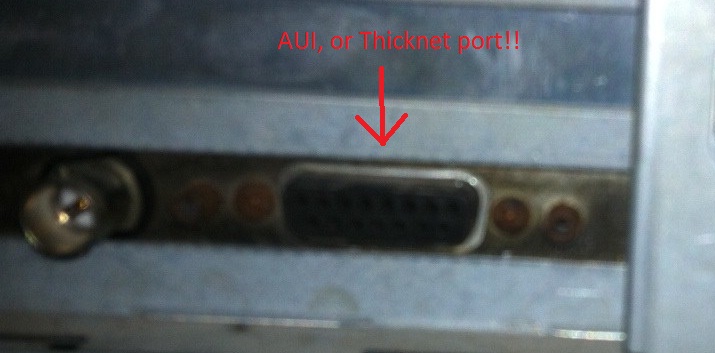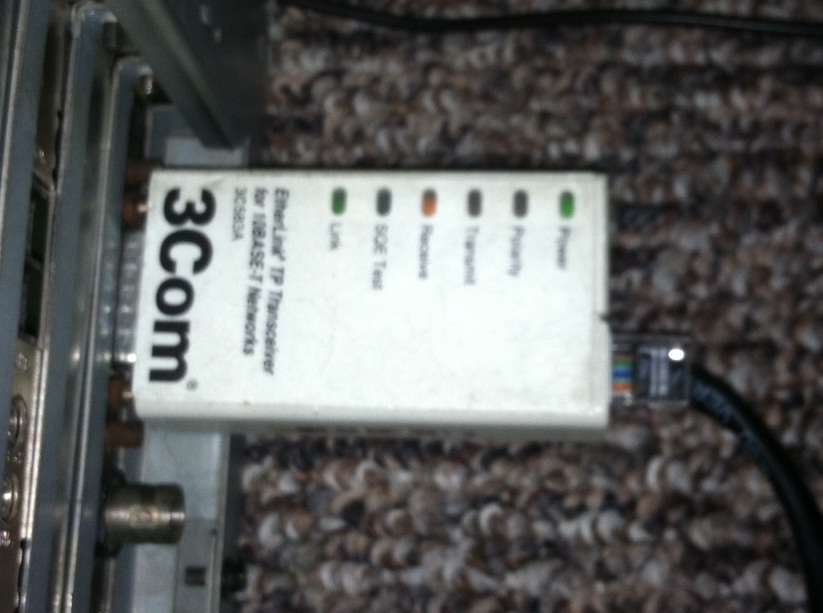So on the heels of my prior post, someone was asking me, where do you exactly plug in an RJ-45 style cable to something like an Etherlink II?  It had never occured to me that many people today would have no idea what thicknet/thinnet were, or what the magical world of the AUI port is.. Sure there are transceivers still in use, but typically in larger networking equipment, and more so to choose what king of fiber optics to use (single mode? multimode? etc..).
So looking at the back of the card, we see this:
Sorry for the poor quality but.. thems the breaks.  So anyways back in the day ethernet revolved around this big bulky cabling lovingly called Thicknet.  And you had to use these ‘vampire’ taps to plug into the cable, and the cable had markings that you could only tap into it a certain points.  So luckily for us, the transceiver component of Thicknet was external, letting us in the future plug in different transceivers for different media types.
Say something like this:
And that is how you can plug a cable into a card that is older than the rj45 ethernet standard!



Recently picked up a ThinkPad 701CS with a PCMCIA EtherLink III. Windows sees it, but there’s 10Base-T, it’s got something like a tiny little AUI. Cables seem expensive, any suggestions?
I used to have one of those! … I used a cisco pcmcia wifi card, and it’d automatically join open wifi networks…. fun machine with the fold out keyboard…
I’m sure its a PCMCIA only machine not cardbus, so be careful looking for cards.. in the meantime it should have serial/parallel so there is always PPP/SLIP!
It has parallel, but a proprietary version that’s odd and hooks up floppies too. It’s a subnotebook. Thankfully, I have a dock that gives REAL parallel and serial.
Yup, looking for 16-bit cards can be a hassle.
To add, mine is a DX4 model; it should have came with OS/2 but it had Windows 3.1 sloppily upgraded to Windows 95, and it was stripped down after that, with software like Duke3D, Access, and ACT! missing when they were installed by the owner. (protip: never aggressively uninstall)
the hard part in this day & age is getting blank floppy disks to rebuild stuff …
Although Win95 + Duke3d sounds like my old IBM …. lol
If you ever lived near Halifax it might have been!
Good news; got a Linksys PCM100, it works on Windows 95 AND has official OS/2 drivers.